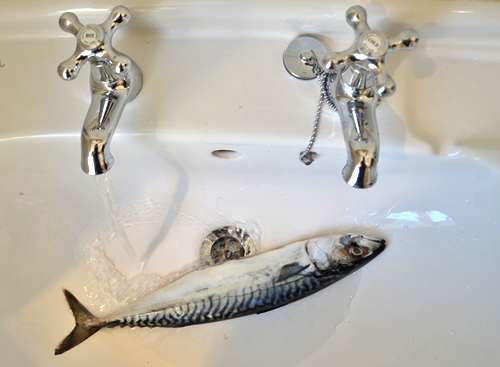Microplastic pollution hits the headlines

Over the last few weeks we have seen an upswing in the coverage of microplastic pollution in the media, bringing this important issue to the fore.
Microplastics (small pieces measuring less than 5 mm) can result from the breakdown of larger items, but as regular Fauna & Flora International (FFI) followers will know, there are also a number of direct sources – perhaps the most egregious of which are the tiny plastic beads used in many cosmetic products such as facial scrubs.
These microbeads are used as exfoliants and wash straight down the drain after use, ending up in our rivers and seas.
Research has shown that many marine species eat microplastics, which can cause an array of problems – from digestive blockages and starvation to the accumulation of toxic chemicals found in the plastic. The latter could also have serious implications for human health.
Consumer power
Given the severity of the issue, it is perhaps no wonder that people are beginning to question why plastic microbeads are being added to products in the first place, when harmless alternatives are available.
"It is reassuring to see this critical issue starting to get the recognition it deserves," said Abigail Entwistle, Director of Conservation Science at FFI. "While many cosmetic companies have already pledged to phase out plastic microbeads, we need to keep this issue in the spotlight to ensure that these commitments are met and other manufacturers follow suit."
One of the most effective ways to influence business practices is to 'vote with your wallet' by choosing products that do not contain plastic microbeads.
To make this easier, FFI has produced the Good Scrub Guide which allows UK consumers to quickly and easily find plastic-free face scrubs.
For those outside the UK and those on the go, an international smartphone app is also available that allows consumers in 16 countries to scan product barcodes and check for plastic. The app was the result of successful collaboration between more than 30 NGOs, including FFI, the Marine Conservation Society, and Dutch organisations Plastic Soup Foundation and the North Sea Foundation.
Legislating for the future
Political pressure is also beginning to mount.
In 2013, 5 Gyres (another key member of the Beat the Micro Bead campaign) published scientific reports that illustrated the extent of microplastic pollution in the American Great Lakes and even managed to trace certain microbeads back to individual personal care products.
Based on this evidence, the Microbead-Free Water Act – the first of its kind – was introduced earlier this year to the State of New York by US Attorney General Eric T. Schneiderman and Long Island Assemblyman Robert K. Sweeney.
5 Gyres will be working closely with the other states bordering the Great Lakes to ensure the widespread adoption of this legislation over the coming months, and it is hoped that other policymakers around the world will soon follow suit.
Provided by Fauna & Flora International



















